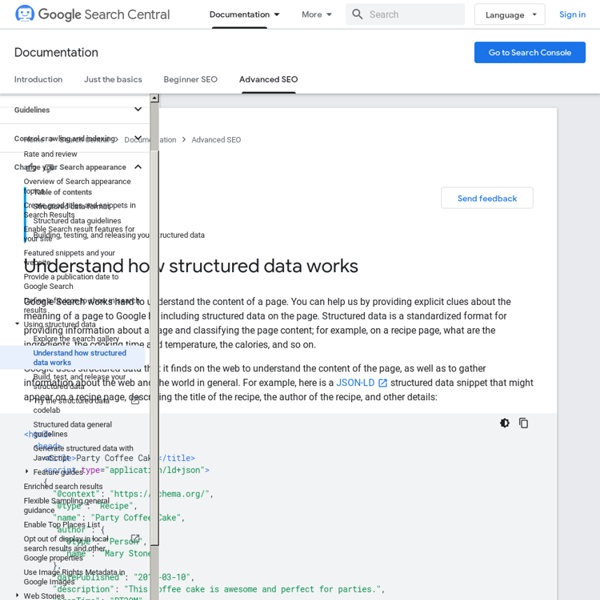AR.js - Augmented Reality for the Web
Logo by Simon Poulter AR.js is a lightweight library for Augmented Reality on the Web, coming with features like Marker based and Location based AR. Welcome to the official repository! This project has been created by @jeromeetienne and it is now maintained by @nicolocarpignoli.
searchFAST
Welcome to the new searchFAST user interface. This new interface simplifies the process of heading selection, in an easy to use one-page design. FAST subject headings were developed by adapting the Library of Congress Subject Headings (LCSH) with a simplified syntax, retaining the very rich vocabulary of LCSH while making the schema easier to understand, control, apply, and use.
Schema.org - Documentation
Here is some of the documentation available on this site: Site Info Getting Started: A simple introduction to microdata and using schema.org for marking up your site.About Schema.org: Learn more about the project. ... and how we work.Releases: Full history of recent releases. Schema Info
Schema.org Structured Data - Learn SEO - Moz
Schema.org (often called Schema) is a semantic vocabulary of tags (or microdata) that you can add to your HTML to improve the way search engines read and represent your page in SERPs. Code Sample <div itemscope itemtype=" itemprop="name"> Inbound Marketing and SEO: Insights from the Moz Blog</span><span itemprop="author">Rand Fishkin</span></div> What is Schema.org Structured Data? Schema.org is the result of collaboration between Google, Bing, Yandex, and Yahoo! to help you provide the information their search engines need to understand your content and provide the best search results possible at this time.
Creating a New Widget - Elementor Developers
Menu Search Close My Account Download
PubChemRDF Release Notes
V1.6 beta (See the V1.5.2 beta Release Notes)Total number of triples: (last update on: )for more details, please see Table 2 1. Introduction Semantic Web technologies are emerging as an increasingly important approach to distribute and integrate scientific data. These technologies include the trio of the Resource Description Framework (RDF), Web Ontology Language (OWL), and SPARQL query language.
Introduction to robots.txt - Search Console Help
The basics of robots.txt files: what they are and how to use them What is a robots.txt file? A robots.txt file tells search engine crawlers which pages or files the crawler can or can't request from your site. This is used mainly to avoid overloading your site with requests; it is not a mechanism for keeping a web page out of Google. To keep a web page out of Google, you should use noindex directives, or password-protect your page. What is robots.txt used for?
FAQ - schema.org
What is the purpose of schema.org? Why are Google, Bing, Yandex and Yahoo! collaborating? Aren't you competitors?
CSS Support Guide for Email Clients [+Checklist]
Version history 14 November 2017 Outlook.com and the Outlook iOS app added support for CSS background images and some related properties, as well as certain Flexbox and Grid properties. Also added iOS 11 Mail to the guide, with no noticeable differences from iOS 10.
Using SPARQL to access Linked Open Data
Lesson Goals This lesson explains why many cultural institutions are adopting graph databases, and how researchers can access these data though the query language called SPARQL. Table of contents
How to remove from Google
There are many ways to remove URLs from Google, but there’s no one size fits all approach. It all depends on your circumstances. That’s an important point to understand. Not only will using the wrong method sometimes lead to pages not being removed from the index as intended, but it can also have a negative effect on SEO. To help you quickly decide which method of removal is best for you, we made a flowchart so you can skip to the relevant section of the article. In this post, you’ll learn:



